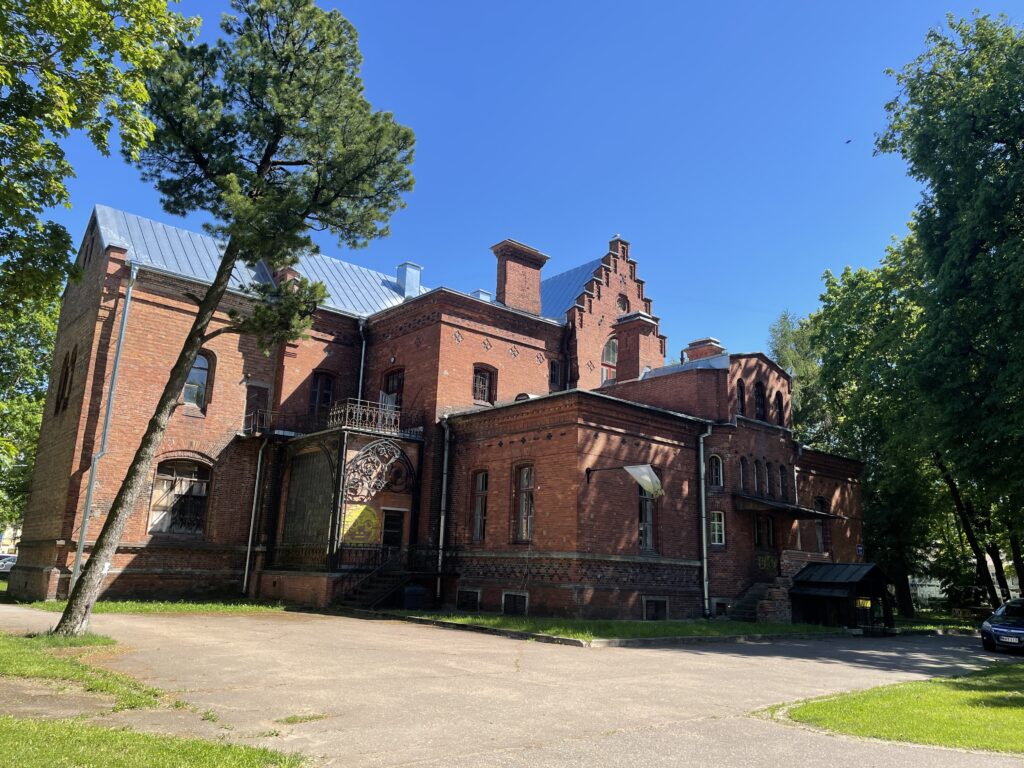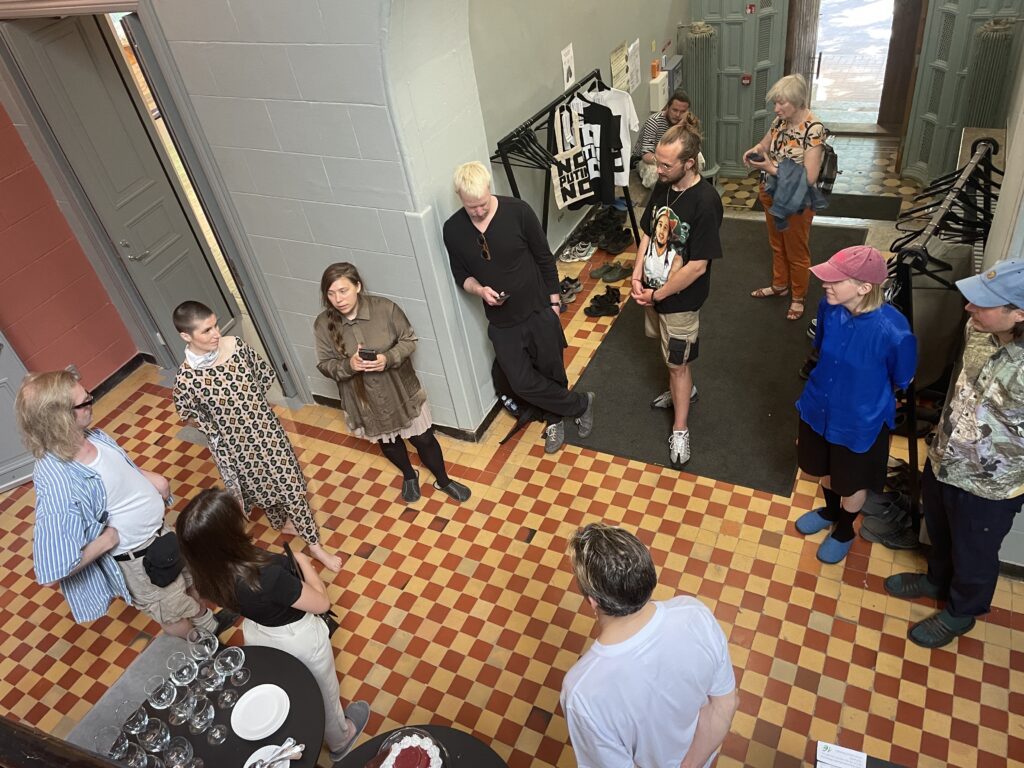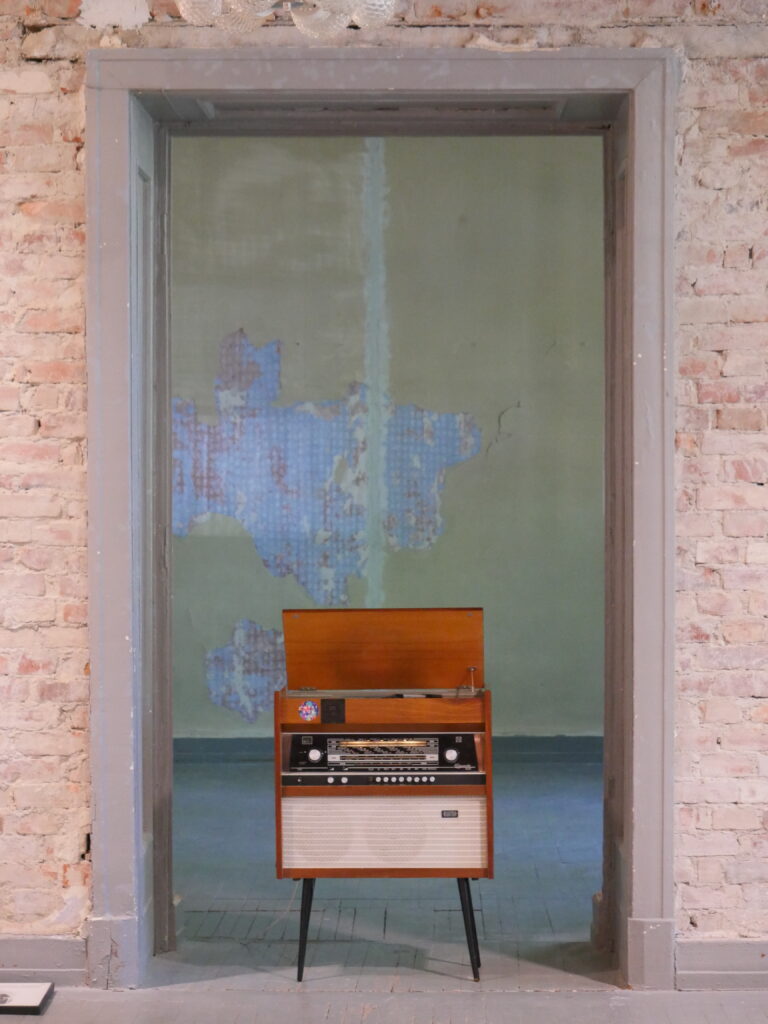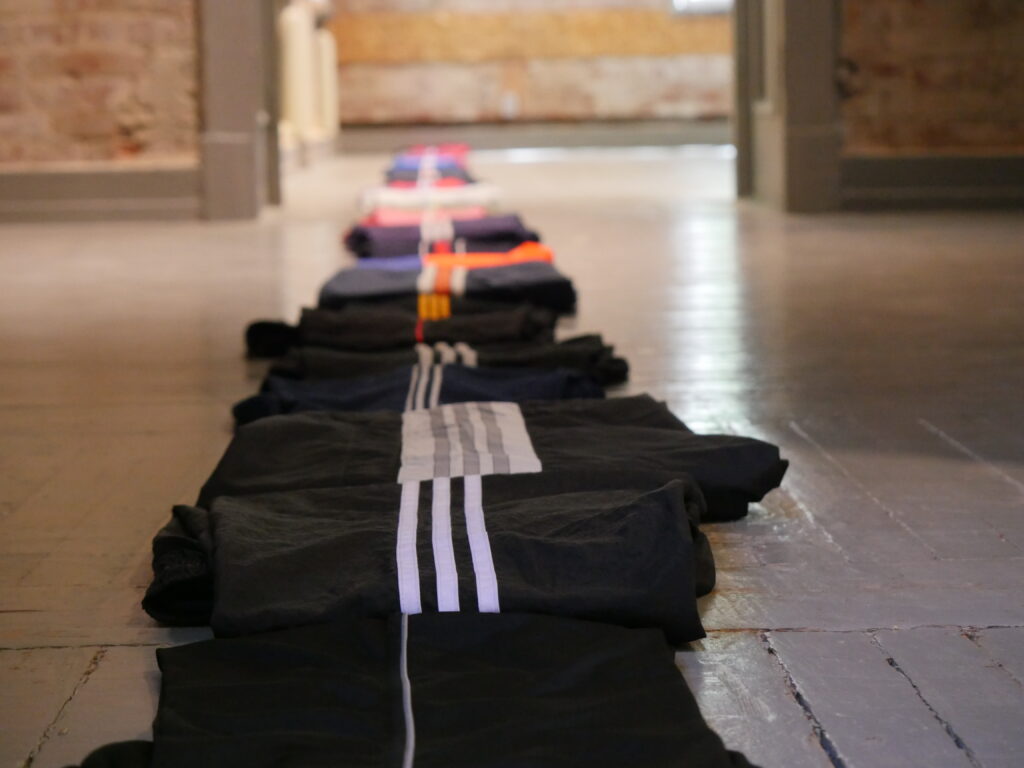International artists are competing to stay in an Estonian city bordering Russia – Narva.
Narva sits on one side of a river, and on the other lies Russia. What’s more, that river is so narrow that residents and visitors can even wave to Russian fishermen, who generally remain careful not to dwell too close to the Estonian side.
Here, boat patrols regularly scout the waters where two worlds meet – on the western shore NATO and the European Union; on the eastern shore Russia.
Narva has often been a battleground for major powers.
In a speech, this past June, Russia’s president Vladimir Putin mentioned Narva when he justified the invasion of Ukraine. He said that Peter the First once “took Narva back” from Sweden to “secure” Russian control, implying that the land the Russian Czar conquered was rightfully Russian.
That made Estonians anxious about their third largest city, despite the fact that Narva and its surrounding areas starkly contrast with the rest of the country. For instance, many residents speak Russian and follow Russian propaganda media with the help of virtual private networks (VPNs), even though the practice is ostensibly banned by law.
At the same time, hundreds of Ukrainian refugees, mostly from Mariupol, are crossing the Narva bridge – ironically known as the Friendship Bridge – to the free world every day. They travel a long way through Russia; some arrive wounded, while most are simply exhausted from the grueling journey.
Needless to say, Narva doesn’t feel like an average Estonian city, however, it’s decidedly not Russia either. It’s a crossing point, a “real transition place”, as New York-based installation artist Andrea Stanislav tells Estonian World. “I don’t think there are many places like that.”
Stanislav was a resident at the local art centre, Narva Art Residency, operated by the Estonian Academy of Arts. Last year, 340 artists from around the world applied for a spot at the residency. In the end, a mere 16 were selected.
“I have no idea how people find us”, says Johanna Rannula, the Art Residency’s director, with a laugh. “It’s mainly word-of-mouth”. Rannula is the de facto mastermind behind the centre, and she has big plans for it.
Artists are attracted to the place not only because of the history hidden within the city but also because of the grandiose building they get to call home. Having survived the Second World War as if by a miracle, the space belonged to the director of a textile factory, Kreenholm, which used to be one of the biggest textile factories in the world.

Unfortunately, not every building in Narva – once regarded as the baroque capital of Europe with its beautiful old town – was spared during the war.
Nevertheless, the Narva Art Residency building is a little reminder of that former glory with its high ceilings, arched windows and crystalline chandeliers, all of which inspire the current crop of international artists, students and Ukrainian refugees who call it home.
In the cinema room upstairs Stanislav prepares to film a goat Rannula brought in from her country house. Stanislav ended up in Narva by accident in 2009 and fell in love with the city. “I knew I had to come back here”, she says.
The American artist is now working on an immersive video installation about her adopted hometown as a place of waiting and transition, merging the past with the present and drawing on themes of love and loss. “I walked in here and everything just clicked”, the artist recalls. “We would eat dinners together with other artists and talk about our work”, adding, “It’s conducive to creating.”

During our visit, the three-floored house is buzzing as exhibitions, workshops and performances take place in its various rooms.

Rannula, who completed her Master’s Degree in urban studies at the Estonian Academy of Arts, hopes her fellow artists take the opportunity to immerse themselves in Narva’s community during their stay. In her experience, even those who don’t speak Russian always find a way to communicate with the locals if they wish.
To help facilitate this, she’s rented two garages at a place where the core of Narva reveals itself, known to locals as Narva’s Venice.
Along the river, more than 700 garages are lined up next to one another. Locals have turned many of these properties into small summer cottages complete with saunas, culminating in a thriving community where folks can fish and enjoy a beer by the shashlik grill.
Giant electric grids carrying Russian energy hum above their heads, competing with frogs croaking in the water. “I want to open this place up and organize events here”, says Alexander, the newly elected – not to mention ambitious – leader of the community. “Even though some are more afraid of the attention, I believe the residents would like to see something new and interesting here.”
Simply put, Alexander wants to show the outside world that Narva is not a scary place. At night, the electric buzzing gets louder, he tells me, but he barely notices it anymore.

Collecting bullet holes
Back at the residency, Russian artists Sasha and Pavel Rotts (their artistic duo is called SASHAPASHA) prepare for their exhibition downstairs.
They’ve collected sports trousers adorned with stripes running down the sides and lined them up on the floor. The lines speak to the borders that are becoming increasingly elusive. Dramatic classical music plays in the background.

“Usually you can cross the borders, but in this case, the border is becoming unreachable like a horizon, especially in Narva. It used to be so easy to cross the border here before”, Pavel explains.
Pavel, who comes from a Russian background, believes that his duty is to speak about the invasion of Ukraine through his art. Everything else “would be wasting time”, he says, adding that now is not the time to be ignorant.
He is rather explicit in his message, selling t-shirts with “No Putin No” printed on them and donating all the profits to Ukraine.
Pavel and Sasha have participated in many artist residencies together, but according to the pair, Narva is special.
“It’s far from being boring”, Pavel says. “There is a nice combination of privacy as you can dive into the creative process, but you can also meet people.”
Recently, Pavel has been looking for bombshell traces in Narva, which he photographs and adds to his collection. Eventually, he would like to create a climbing wall made of forms cast from bombshell craters.
“I would like people to be able to experience war traces physically”, he says. There are plenty of war signs in Narva, he was surprised to find out.

Narva has seen the war
As a former actress, Varia Sjöstrom is exploring and transforming spaces with her creative partner Hatz Lambo. Together they call themselves Varialambo and have attended many art residencies. Much like SASHAPASHA, the uniqueness of Narva speaks to them.
“We both grew up in Berlin and this place feels very comfortable for us”, Sjöström says. “This place is full of stories.”
Sjöström and Lambo have spent one and a half months at the residency and are heading home soon. During their time, they have been capturing videos of the surrounding areas, writing poems and creating sculptures from found objects.
Amongst the landscape, they have found scraps of Soviet trauma.
And yet, Narva doesn’t have much time to deal with its own tragedy now that refugees are pouring in. The residency is so close to Russia that residents can see the border from upstairs windows. Whenever there is an empty bed available, volunteers bring Ukrainian refugees from the border to the residency for a night or two. They usually don’t need a place for much longer, as most are in transit and ultimately destined for Tallinn and other parts of Europe.
Besides serving as a physical entry point, Rannula would like Narva’s Art Residency to also become a conduit between locals and the international art scene. Even though Narva was once destroyed, its soul remains intact. And plenty of artists have already tracked it down.

